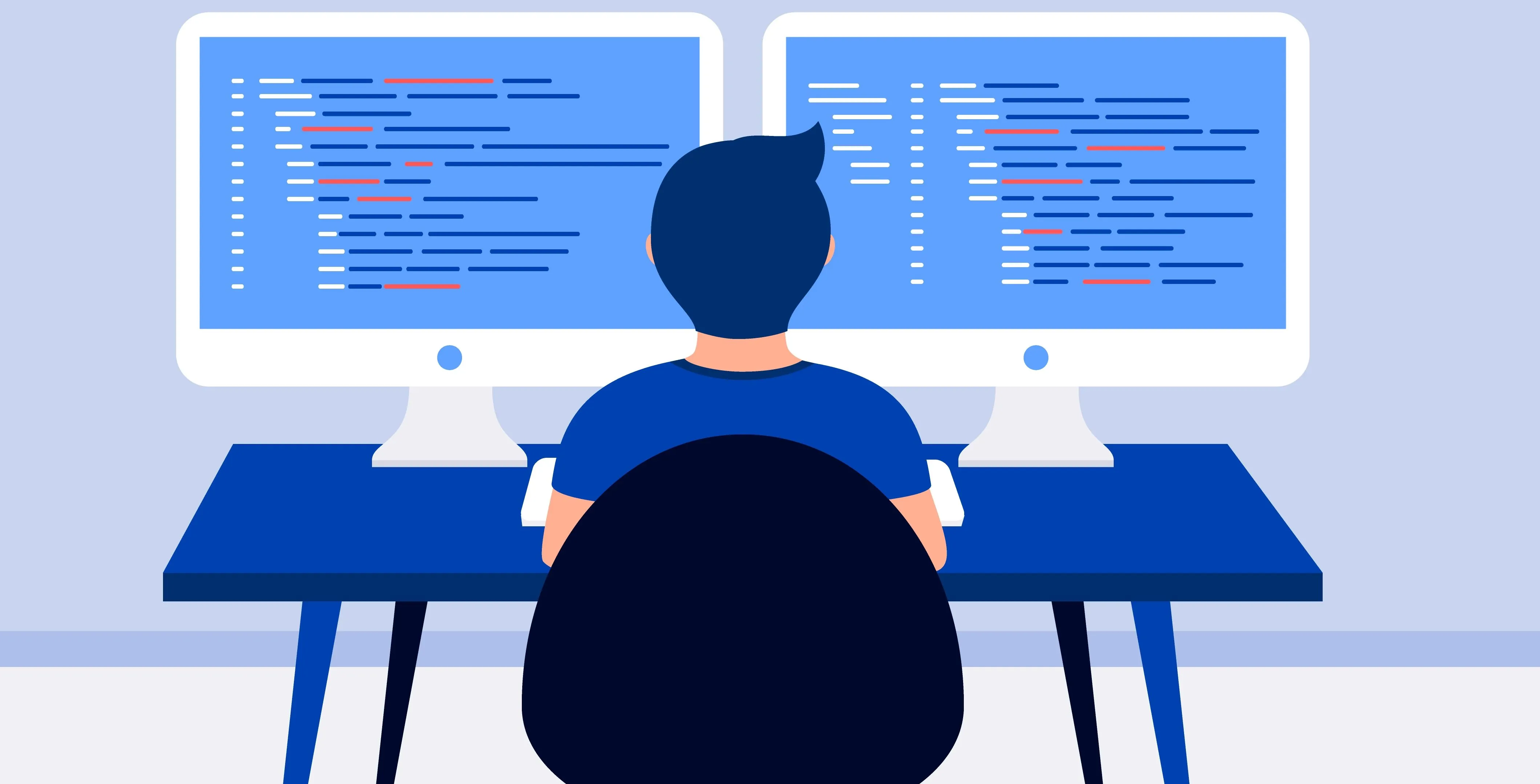In the fast-paced world of software development staying productive is easier said than done. Distractions lurk around every corner, workflows get convoluted, and keeping up with the latest tools and techniques can seem impossible. No wonder developer productivity is on shaky ground.
According to Stack Overflow’s 2022 developer survey, only 30% of developers feel productive for over 5 hours in a typical workday. And a shocking 44% feel productive for less than 3 hours a day.
Clearly, there are some major productivity killers sabotaging developers from doing their best work. Left unchecked, these barriers to productivity chip away at innovation, morale, and business results.
The good news is that once we shed light on what’s dragging down developer productivity, we can take action to nurture engineering excellence. In this up-to-date 2024 guide, we will uncover the top 15 silent productivity killers plaguing developers.
With insights from industry research, we’ll equip you to cultivate empowering team cultures, streamlined workflows, and sanity-saving tools. Say goodbye to distractions, bottlenecks, and burnout. And hello to hyper-focused flow states where you create your best work.
Table of Contents
Here are the Top 15 Things that are killing Developer Productivity
1. Unnecessary Meetings
Meetings are one of the biggest enemies of developer productivity. Context switching between coding and meetings can hamper focus. According to surveys, developers spend an average of 3 hours per week in unnecessary meetings. Back-to-back meetings with little time for coding drain time and energy. Having too many participants in meetings when their presence is not required also cuts into coding time.
Actionable tips:
- Audit meetings to determine the necessity and optimal duration
- Enforce a 30-60 minute coding block between meetings
- Limit participants to only required attendees
- Share recordings instead of having repeat meetings
2. Poor Code Quality
Technical debt that accumulates due to quick-fix solutions rather than optimal implementations creates a drag on productivity. Developers then have to waste time unraveling tangled code instead of building new features. Bugs introduced due to flawed logic also eat up precious debugging and testing time. Legacy systems with outdated codebases are breeding grounds for poor code quality.
Actionable tips:
- Enforce code reviews and testing before integration
- Schedule tech debt sprints for refactoring and optimization
- Introduce coding best practices and standards
- Automate testing to catch bugs early
3. Code Review Inefficiencies
While essential, code reviews can also impede productivity if not managed well. Ambiguous and overly-critical feedback delays pull request emergence. Reviews that drag on for too long block progress to the next task. The back-and-forth communication needed to clarify review comments eats up time. Having to context switch between coding and tending to review comments also hampers productivity.
Actionable tips:
- Streamline the review process with checklists and templates
- Implement timeboxes for reviewers
- Offer constructive suggestions to guide improvements
- Use in-line comments to enable faster resolution
4. Lack of Focus
Developers require long stretches of uninterrupted coding time to enter deep focus states. However, open office environments and a culture of distraction with notifications, pings, emails, and chats break focus frequently. Context switching also disrupts the ability to focus for long periods. This fragmented attention results in up to 40% lower productivity.
Actionable tips:
- Have designated deep focus time blocks
- Discourage unnecessary pings during focus time
- Use focus apps to reduce distractions
- Schedule productive work during peak energy times
5. Unrealistic Deadlines
Impossible deadlines imposed by non-technical management lead to excessive overtime and weekend work. This unsustainable pace results in developer burnout, further exacerbating productivity issues. Taking shortcuts to meet unreasonable deadlines also creates technical debt. Developers need sufficient time to engineer quality solutions.
Actionable tips:
- Involve developers in deadline estimates
- Build buffer time into schedules
- Scope projects realistically
- Avoid last-minute feature creep
- Celebrate shipped value over deadlines
6. Constant Interruptions
Developers face frequent disruptions from colleagues asking questions, seeking help for urgent issues or pulling them into impromptu discussions. A GitHub study showed that it takes an average of 15 minutes to resume work after even minor interruptions. These derail focus and increase mental fatigue and errors.
Actionable tips:
- Have documentation and chat channels for common queries
- Use headphones and status indicators to avoid interruptions
- Designate “office hours” for unplanned discussions
- Schedule deep focus days with minimal interactions
7. Poor Work-life Balance
Long hours, high pressure, constant urgency, and unrealistic deadlines often result in poor work-life balance. Developers need time outside work to recharge. However, a culture that expects participation 24/7 leads to burnout. Research shows that knowledge workers are most productive for 5-6 hours per day. Productivity sharply drops beyond this.
Actionable tips:
- Focus on sustainable pace and work allocation
- Discourage after-hours work
- Offer sufficient vacation time
- Respect personal time and avoid off-hour pings
8. Insufficient Training
Developers need time to learn new languages, frameworks, tools and best practices. However, insufficient training time results in unproductive struggle. For example, a team switched to a new tech stack without proper skills training will be less productive until they come up to speed. Even experienced developers benefit from regular time allocated to training.
Actionable tips:
- Budget 15-20% time for training
- Sponsor conferences, courses, certifications
- Enable access to online training platforms
- Promote mentorship and peer learning
9. Missing Documentation
Figuring out undocumented code and systems is frustrating and time-consuming for developers. When tribal knowledge exists only in people’s heads instead of being documented, it causes repeated questions and cripples onboarding. Lack of project, code and process documentation derails productivity.
Actionable tips:
- Make documentation part of the definition when done
- Schedule documentation sprints
- Use wikis to capture tribal knowledge
- Automate documentation
- Appoint technical writers
10. Distracting Workspaces
Open offices with too much noise, visual distraction and lack of privacy hamper focus. Crammed desks, uncomfortable chairs and ergonomic issues also impede productivity. Developers need quiet, private workspaces and proper equipment to enable concentration. Commutes further drain energy and productivity.
Actionable tips:
- Provide noise-cancelling headphones
- Have quiet rooms for focused work
- Offer ergonomic assessments and equipment
- Allow remote work to eliminate commutes
11. Multitasking Myth
The myth of multitasking needs debunking – context switching comes at a huge cost to productivity. Our brains cannot effectively multitask, especially for complex cognitive tasks like coding. Frequently switching between tasks, priorities and projects is hugely counterproductive as it introduces high mental load from constant context switching.
Actionable tips:
- Promote single-tasking
- Group similar tasks to limit switching
- Block time for priority tasks
- Eliminate distractions during focused work
12. Tooling Issues
Time wasted wrestling with tools, debugging environment issues and builds subtracts directly from coding productivity. Factors like outdated toolchains, inconsistent dev environments, lack of automation, flaky builds, slow hardware and network latency introduce friction. Bad tooling makes easy tasks hard.
Actionable tips:
- Standardize and automate environments
- Invest in high performance hardware
- Enable fast feedback loops
- Monitor build health proactively
- Prioritize the reliability of tooling
13. Lack of Alignment
Developers need clarity on goals, priorities and expectations to channel efforts productively. However, misalignment due to poor planning, inadequate communication and shifting priorities leads to frequent changes, wasted efforts and throwaway work. This causes frustration and disengagement.
Actionable tips:
- Communicate vision, objectives, and key results
- Limit work in progress
- Introduce prioritization frameworks
- Ensure transparency in decision-making
- Empower developers in planning processes
14. Insufficient Autonomy
Micromanagement and lack of trust sap intrinsic motivation. Excessive oversight of minor details signals a lack of confidence in developers. Over-reliance on the prescriptive process hinders agility. Insufficient autonomy prevents developers from engineering solutions creatively in the flow state.
Actionable tips:
- Provide clear goals and trust the team’s approaches
- Ask for input instead of prescribing solutions
- Enable decision-making at suitable levels
- Promote psychological safety on teams
15. Toxic Culture
From abrasive communication to cut-throat competitiveness to ambiguous norms, office politics and lack of psychological safety – organizational culture has an enormous impact on productivity. Even a few toxic team members can bring down the morale, motivation, and effectiveness of the entire team.
Actionable tips:
- Build empathy, trust and healthy team dynamics
- Address abrasive communication styles
- Reward collaborative behaviors
- Remove individuals dragging down culture
- Lead by example
Developer Productivity Tools
Boosting productivity requires the right tools. Here are some must-have tools for managing and optimizing developer productivity:
- Time Tracking: Tools like Timely and Toggl track time spent on tasks and projects, revealing productivity patterns.
- Code Collaboration: Solutions like GitHub, GitLab and Bitbucket enable seamless code review and project management.
- Automated Testing: Frameworks like Selenium and Jest automate testing to reduce debugging time.
- Code Quality: Linters like ESLint and SonarQube highlight problematic code areas to address.
- CI/CD Pipelines: Jenkins, CircleCI and other tools automate build, test, and deployment flows.
- Task Management: Project management tools like Asana, Jira and Trello streamline task and project coordination.
- Code Search: Tools like Sourcegraph and Silver Searcher make code discovery faster.
- Browser Tools: Extensions like StayFocusd, Momentum Dash and WasteNoTime combat digital distractions.
How to Measure Developer Productivity
You can’t manage what you don’t measure.
Peter Drucker
Measuring developer productivity enables us to track progress, identify bottlenecks and improve over time.
Useful productivity metrics include:
- Cycle Time: The time taken to complete tasks/user stories from start to finish
- Throughput: The number of story points delivered per sprint
- Lead Time: The time takes for code to flow from commit to production
- Escape Defects: Bugs discovered after deployment to users
- Focus Factor: The percentage of time spent on meaningful work vs distractions
- Net Promoter Score: Quantitative measure of developer experience and satisfaction
How to Improve Developer Productivity
Here are proven strategies to boost developer productivity:
- Establish Quantified Goals: Set specific, measurable targets for productivity KPIs.
- Reduce Context Switching: Enable long stretches of focused work.
- Automate Repeatable Tasks: Streamline workflows through automation.
- Improve Code Quality: Refactor legacy code and enforce standards.
- Align to Business Goals: Ensure developers understand business priorities.
- Offer Learning Opportunities: Sponsor conferences, certifications, etc.
- Celebrate Wins: Recognize productivity milestones publicly.
- Cultivate Connection: Build trust and psychological safety in teams.
- Lead by Example: Model sustainable work practices.
- Listen and Learn: Continuously seek feedback from developers.
With the right tools, measurement discipline, and cultural practices, spectacular developer productivity is within reach!
Conclusion
The path to super-charged developer productivity is clear – we just have to avoid these sneaky productivity killers. By fixing dysfunctional team workflows, cluttered workspaces, and spirit-crushing policies, we can unlock way more focused coding time. Imagine what we could create with energized developers fully immersed in the flow. High-quality code shipped fast. Innovations that dazzle users. Products that disrupt industries. Making this productivity utopia takes work. As leaders, it’s on us to spearhead the change.
Let’s start by listening to our developers’ pain points and ideas. Empower them to redesign inefficient processes that waste precious time. Provide the tools and training they need to excel. And advocate for uninterrupted maker time to find their creative groove. By putting developer productivity first, our teams will rediscover their passion for building. Burdens lifted, they can spend more time creating instead of being stuck in meetings and mobbed by distractions.





